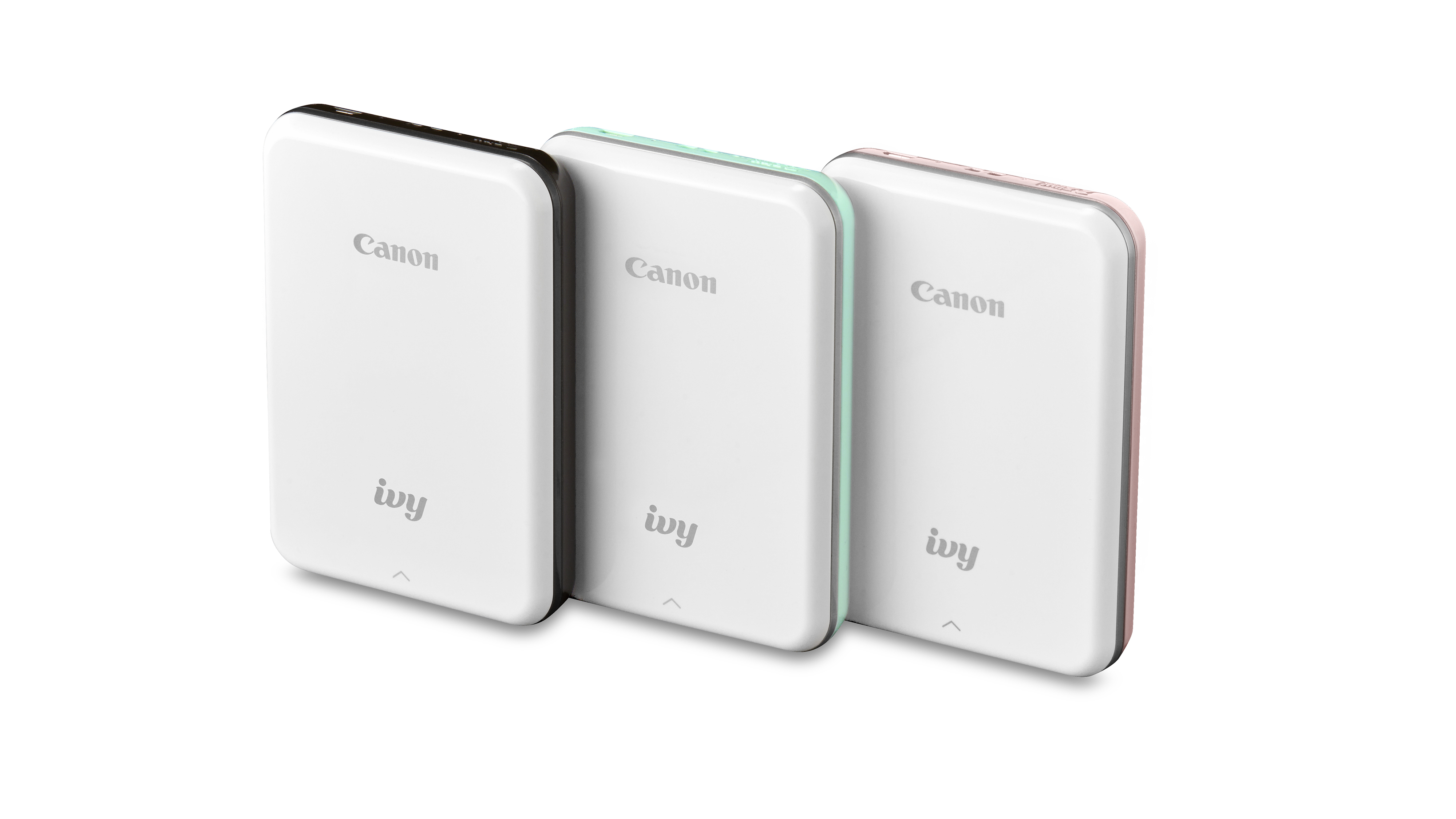
Canon is following in the footsteps of Fujifilm by releasing a compact printer designed for the smartphone generation.
The IVY mini photo printer is designed, in Canon's words, to empower "the next generation of creators to tell and share their story in real life through the power of print in the digital age".
It's Canon's smallest and lightest printer to date, and produces 2 x 3-inch prints (there's also a sticker output option). It's available in white with a rose gold, mint green or slate grey trim.
The IVY is controlled via the Canon Mini Print app, which includes creative filters for adding effects such as photo frames and stickers, augmented reality (AR) face distortion, and photo-editing tools for adding text and drawing on images.
As well as the option to print individual smudge-free and water-resistant 2 x 3 inch prints or stickers, the IVY also has an option to output a tile print made up of four or nine prints, as well as collage templates that print on one 2 x 3 inch photo.
Zero ink
The IVY printer utilizes ZINK Zero Ink technology, which means the IVY is capable of printing full color without the need of ink cartridges. Each pack of paper comes with one blue Zink Smart Sheet, which calibrates the IVY printer to the photo paper in that pack to produce consistent colors.
For now the Canon IVY mini photo printer is only available in the US, with an expected retail price of $129.99, which includes the printer and a starter pack of 10 sheets of photo paper. Twenty-sheet and 50-sheet packs of photo paper will also be available for an expected price of $9.99 and $24.99.
Get daily insight, inspiration and deals in your inbox
Sign up for breaking news, reviews, opinion, top tech deals, and more.
Phil Hall is an experienced writer and editor having worked on some of the largest photography magazines in the UK, and now edit the photography channel of TechRadar, the UK's biggest tech website and one of the largest in the world. He has also worked on numerous commercial projects, including working with manufacturers like Nikon and Fujifilm on bespoke printed and online camera guides, as well as writing technique blogs and copy for the John Lewis Technology guide.
